The Journey Starts in North Malé Atoll (Kaafu Atoll)
Our full India 2016 Transformative Journey begins in Maldives, “where sands are white as the smiles of the locals, where fish swim happily in the warm waters of the Indian Ocean, where the weather is a dream, and the deep rays of the sun wait to engulf you in their arms.”
The overarching theme of our India 2016 Transformative Journey is balance through alternating currents – pairing excitement, adventure, outer exploration, and the hustle and bustle of the modern world with relaxation, tranquility, personal attention and care, inner exploration, and rest. What better place to begin than by enjoying the simplicities of life in one of the most complex and vibrant atoll structures found anywhere on the planet?

Our full India 2016 Transformative Journey runs from January 19, 2016 through February 7, 2016. A shorter option is also available starting January 25, 2016 in Ft. Kochi.
Maldives Geography
Maldives is an archipelago comprised of 1,192 coral islands that are naturally grouped in a chain of 26 atolls. These are then grouped together into 20 “administrative atolls,” each with its own name. From Thiladhunmathi Uthurubury in the far north, to Addu Atholhu in the far south, Maldives is situated about 600 kilometres (370 mi) southwest of India, and encompasses a territory spread over roughly 90,000 square kilometres (35,000 sq mi), making it one of the world’s most geographically dispersed. It’s also Earth’s lowest country, with an average elevation of just 1.5 metres (4ft 11in) above sea level, and a highest point of just 2.4 metres (7ft 10in). With such a low profile, the inundation of the Maldives due to rising sea levels is of great concern to its people, motivating the government to pledge to become a carbon-neutral country by 2019. Balance!
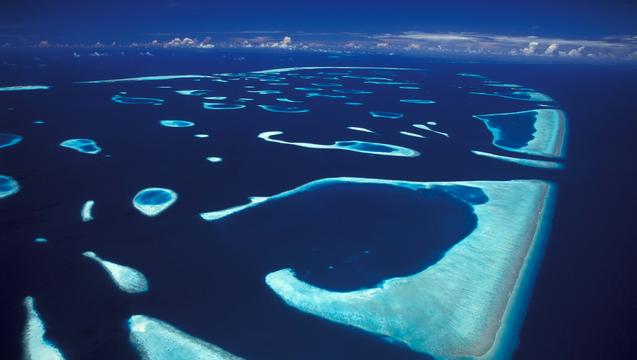
Maldivian Culture
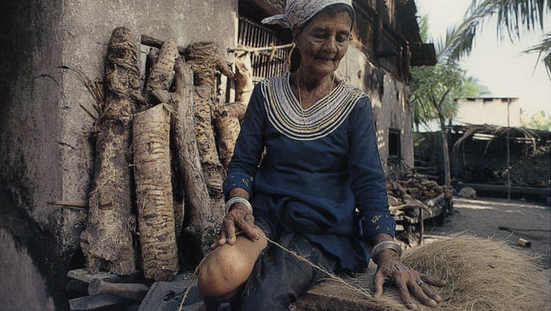
Despite the geographical disparity, the Maldivian culture is rich and unique, and the island communities are close-knit. Although greatly influenced by the Indians, Sri Lankans, Arabs, and North Africans, who visited the country while traversing the trading routes of the central Indian ocean, the Maldivians have built and preserved an exclusive cultural identity, including a language of their own: Dhivehi
Music and Dance

Music and dance are critical elements of traditional Maldivian culture. One of their most famous is an song and dance form called Boduberu, which traces its origins back to East and South West Africa. Numbering about 20, Boduberu performers wear traditional sarongs and white sleeved shirts, and play bodu bera drums with bell and other percussion accompaniment. The emphasis is on release after a hard day’s work, and features drumming and dancing that drives towards a frenetic rhythmic crescendo, with one or two dancers maintaining the wild beat, sometimes ending in a trance.
Check out these Boduberu music videos. We dare you to keep your body still!
The Dhivehi Language

The national language of the Maldives, Dhivehi, combines the basic syntax of the Sri Lankan language Sinhala, with words, phrases, and gramar borrowed from every nationality that has used the island nation as an anchorage over the centuries. Arabic, Persian, Urdu, Davidian, French, Portuguese, and English influences can all be found in Dhivehi.
Practically every Maldivian speaks English. (It’s the unofficial second language of Maldives, and is taught in schools.) Many Dhivevi “loaner” words have English roots. For example, the word for “waiter” (a useful word in the Maldives tourism-driven economy) is “veitar,” while the word for “doctor” is “doctor.” A few Dhivehi words have also migrated into the English language. “Atoll,” the term we use for a ring of coral reefs, is an Anglicized version of the Dhivehi word “Atolu.”
Useful Dhivehi Phrases
Here are some basic phrases that you might find helpful when you travel with us to the Maldives:
- Please: Adhes kohfa
- Thank you: Shukuriyaa
- You’re welcome: Maruhabaa
- I’m so sorry, please excuse me: Ma-aaf kurey
- Hello: Assalaa mu alaikum (This variation on the standard Arabic greeting reflects the Maldives Islam heritage.)
- How are you? (formal) Haalu kihineh; (informal) Kihineh
- I am fine, thank you: Ran’galhu, shukuriyaa
- What’s your name? Kon nameh kiyanee?
- My name is…: Aharenge namakee…
You can find more information on common Dhivehi phrases here.
Biodiversity
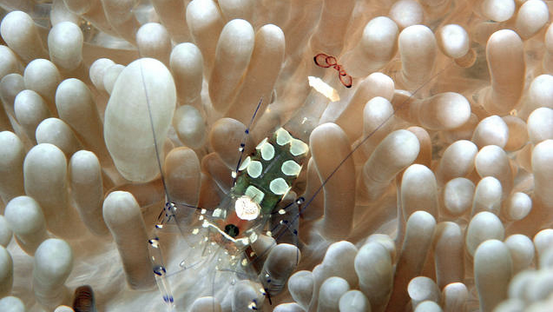
In addition to its cultural balance, the Maldives are blessed with one of the most diverse flora and fauna found on planet Earth. Gardens of coral reefs resemble works of art that have mesmerized snorklers and scuba divers from around the world. The reefs and open seas are inhabited by over 2,000 species of colorful fish.
The skylines of most of the islands are highlighted by the coconut palm tree, and the shorelines are covered by a variety of grass, sedge, shrubs, and trees, with the tallest being the banyan tree. And a rich collection of marine birds call the Maldives home. Over 160 species of birds have been recorded.
About North Malé Atoll
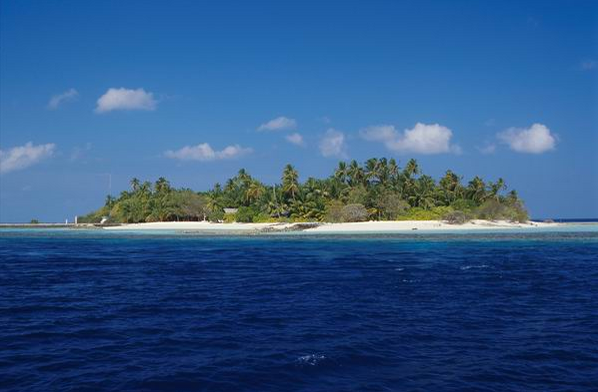
Our destination in the Maldives is North Malé Atoll. At a distance of 32 km (20 mi) north of Malé Airport, it’s a short boat ride to one of the atoll’s tiny islands, where we’ll recover from jet lag while experiencing all that the island has to offer. The natural beauty of the island is in its white sandy beach that recedes to the crystal clear waters of the lagoon, and on to an exotic coral reef abundant in tropical fish of unimaginable colors. The reef is about 20-30 meters from the beach, and is ideal for beginner divers and for snorkeling. For the experienced diver, there are special off-short reef diving spots as well as the channels that open to the Indian Ocean, which provide a rare glimpse into the life of undersea predators.
On this very small island resort, there are just 30 rooms, and a single reception, bar and restaurant building. It’s best known for its simple pleasures – friendship and good conversation, returning guests from all over the world, a genial host family that lives there year-round, and an atmosphere that is reflective of the original Maldives. Word-of-mouth has been its best advertising, and we can’t wait to share this best-kept secret with you.
What to Do While You’re Here?
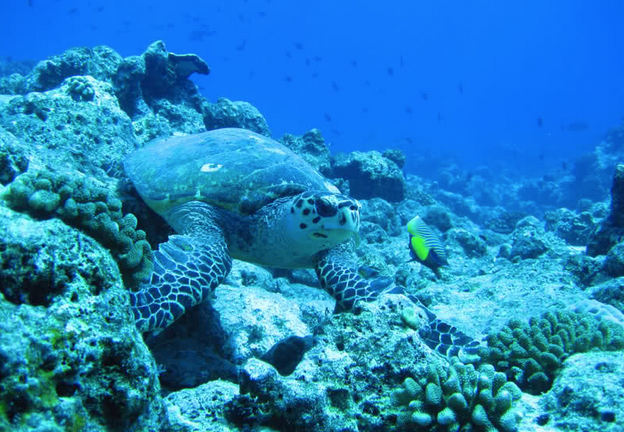
Dive
North Malé is perhaps the best known and explored diving area of the Maldives, and is characterized by reefs, caves, current-swept channels and drop offs. The atoll sees plenty of fish action, and is also a great area for viewing reef sharks and mantas, underwater photography, wrecks, drift dives, reef live and health, and advanced divers. (Not so good for beginner divers.) Due to the popularity of North Malé Atoll as a diving destination, you are advised to book any diving expedition in advance. You won’t find a lot of last minute availability, so pre-planning is essential.
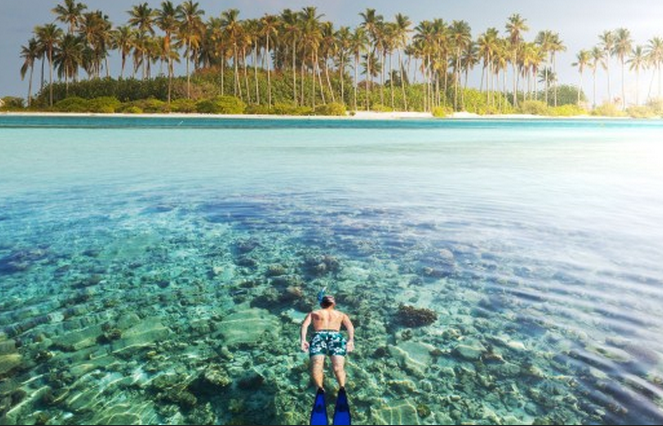
Snorkel
North Malé Atoll offers beautiful reefs for snorkeling with its warm waters which are safe for people of all ages. The reefs have a unique coral formation and abundant marine life, and are easily accessible. The clear waters and the perfect temperatures make the snorkeling experience absolutely wonderful. Turtles, napoleon wrasse and hundreds of other fish are commonly seen within the reefs.

Practice Yoga on a Pristine Beach

Absolutely Nothing!
In Need of Some Balance in Your Life?
Find out more about our India 2016 Transformative Journey that kicks off in the Maldives.
And look for more posts here in coming weeks with detailed information about the other stopping points on our trip.

